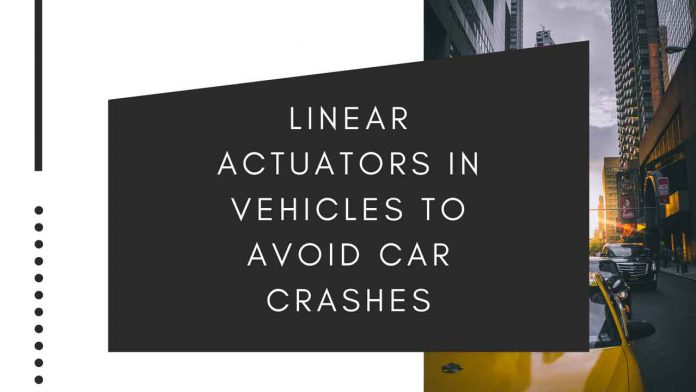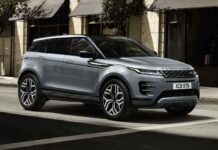We have already got used to the fact that linear actuators accompany us in all the fields. They are widely applied in the manufacturing facilities, packaging units, etc. We cannot imagine our comfortable life without them even in our homes.
But what would you say if you learn that linear actuators are widely applied in cars? No, of course, you know about all those mechanical elements. Now, we are talking about a different type of actuator applications: in autonomous vehicles.
For example, auto actuators are widely applied in self-driven vehicles to avoid collisions. Of course, they do not work alone but in a complex well-adjusted system with many other elements.
How Does an Autonomous Car Work?
Autonomous cars utilize systems of sensors to collect information. Complex algorithms process all the collected data. And then, these systems put actuators in motion to perform one or another activity.
All these components are to extent integrated into the controls of the vehicle. The integration degree depends on the level of the intervention from the side of the driver.
Sensor Systems
Sensor systems consist of actual sensors, multiple cameras installed in different locations at different angles, and radars. These elements are used for determining the situation on the road.
Processors
Processors are responsible for handling the information delivered by sensor systems. Processors also send commands to actuators. Those, in turn, perform specific actions.
Classification of Systems
These systems are classified into several categories depending on their more specific functions:
- Safety;
- Navigation;
- Management of Car Performance.
Safety
Safety is the primary function of any system. This is also one of the main functions of a self-driven vehicle. Autonomous cars are equipped with a system of cameras and sensors. They allow a 360 degrees view of the surroundings, whether it is an empty road, people, other vehicles, or other obstacles. An advanced system of cameras and sensors creates a detailed image of the road and the surroundings.
To consider changes on the road faster, all the self-driving cars are equipped with an inertial measurement unit or IMU. For example, it helps to forecast some risk factors and avoid them. For example, if the slip angle changes, even very insignificantly, the consequences for a car might be disastrous. IMU helps to adjust the car trajectory, speed, and whatever else parameters to avoid the risk.
All the data collected by cameras and sensors are sent to processors. There, in the car processors, complex algorithms work to identify the objects and forecast a possible collision. A new trajectory is developed and a command to change the old trajectory for a new one is sent to the needed actuator system.
Actuators are responsible for the actual adjusting of the car speed, trajectory, and so on. They perform the instructions sent from the processors of the vehicle.
Navigation
Navigation systems determine where the vehicle is located. These systems also choose the best route and adjust it based on the current circumstances.
For example, if a navigation system receives a signal about some obstacle, such as a traffic jam or road maintenance, it will reprocess the data and choose a different route.
A special receiver installed in a car uses the Global Positioning System (GPS) to detect all the conditions around the vehicle. Cameras allow the car to “see” the road while radars collect the data about the road conditions when cameras cannot do it: in heavy rain, snow, mist, etc.
Again, all the data collected by the car`s cameras, sensors, radars are sent to the processors. There, everything is analyzed, and a specific command is sent to the actuators. Depending on what the actuators are told to do, they will follow the selected route, to make a maneuver, or to change the route completely.

Management of Car Performance
While safety and navigation are the most important factors that determine the quality of an autonomous car, energy-efficiency shall be not ignored, either. The manufacturers of advanced cars pay attention to energy-efficiency because of one reason more: the more can a car drive without recharging the battery, the better it is.
That`s why engineers spend a lot of time searching for energy- and fuel-efficient solutions. They develop and install plenty of systems. Those systems monitor power consumption, they check and control thermal dissipation, and similar. It is important to provide not only the needed functionality of the vehicle but to guarantee top safety level to the car users.
These systems allow detecting and prevent an abrupt voltage drop in batteries. They control actuators and valves to make the car work efficiently in particular conditions. Finally, they control the emission level to make the car as environmentally friendly as possible.
Final Thoughts
Even though all the systems of an autonomous vehicle work together to provide the best experience for a driver and to avoid collisions, they still have some hierarchy. While sensor and camera systems are responsible for the collection of data and processors with complex algorithms that oversee processing the information, these systems would be useless without actuators.
Linear actuators are those elements in an autonomous vehicle that perform what is requested by control systems. Without them, the mechanical part of an autonomous vehicle would be impossible. That`s why it is important to purchase linear actuators by reliable manufacturers. It will ensure the long service life of an autonomous car and will provide its users with the expected safety and functionality level.







